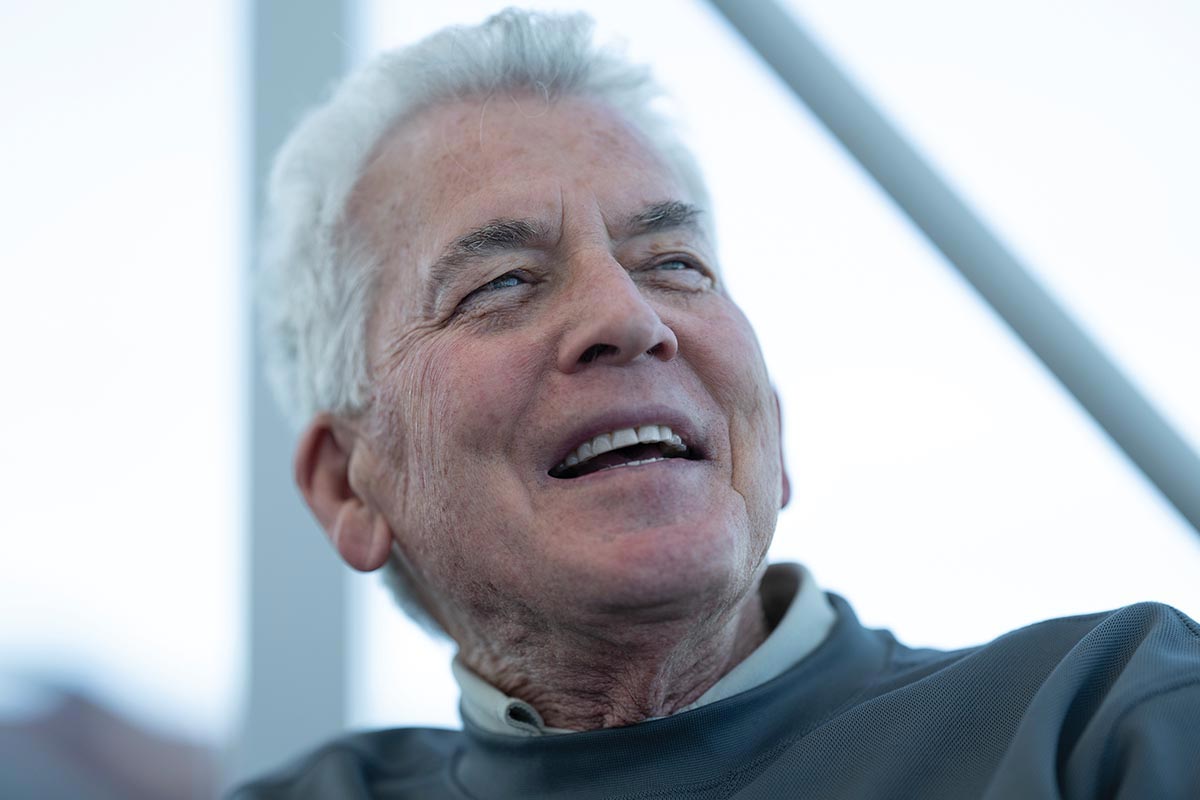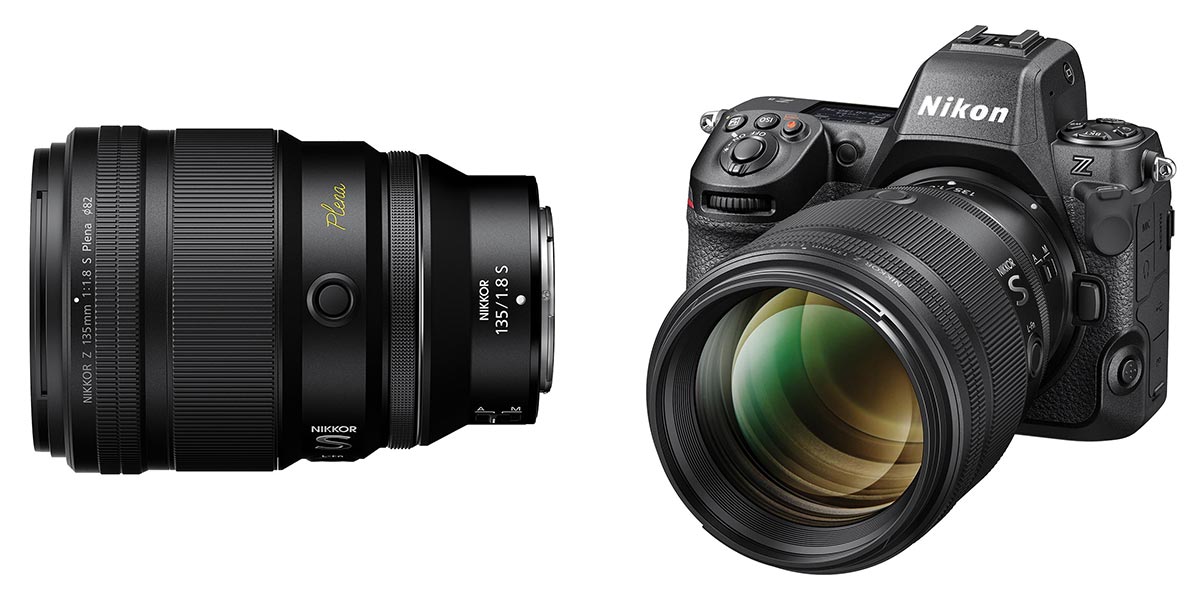Nikkor Plena Review: Enormous Potential
The Nikkor Z 135mm f/1.8 S Plena has capabilities that extend far beyond portraiture.
• May 2024 issue
Nikon’s new Plena lens is in hot demand, and for good reason. Primarily marketed to portrait photographers, the Nikkor Z 135mm f/1.8 S Plena has capabilities that extend far beyond portraiture. If you are a Nikon Z user looking to make your work stand out from your competitors, I can think of worse ways to part with nearly $2,500.
The Plena is only the second Nikkor lens in the company’s century-plus history to be given an official name, indicating Nikon views the Plena as something special. They are right. Like the Nikkor Z 58mm f/0.95 S Noct, the Plena is a big-bodied lens engineered to let in a lot of light. Rooted in the Latin word “plenus,” meaning full, the Plena name fits this lens in many ways.

The Nikkor Z 135mm f/1.8 Plena excels as a portrait lens. I captured this closeup portrait indoors in available light. I set the Nikon Z 8 to matrix metering mode and eye detection AF, and auto white balance.

The Plena excels in available light for candid street photography style portraiture. I made this portrait at the Old Fourth Ward Skate Park in Atlanta toward the end of an overcast day.

The light strings show the gorgeous bokeh of Plena captures.
Built around 16 elements in 14 groups, with some internal surfaces using Nikon’s ARNEO and Meso Amorphous coatings, the lens allows light to flow through in a torrent. Bokeh fans will love the circular highlights formed by combining large-diameter elements and 11 curved-edged aperture blades. The design of lenses longer than 100mm usually includes a vibration-reducing set of elements in the light path, but that’s not the case here. Most likely the trade-off was a balance between achieving the maximum amount of light through the lens, optimal optical characteristics, and additional size and weight versus the benefits of steadier images at very low shutter speeds. The Plena takes 82mm filters, a size coming into common use by multiple lens makers. Autofocus duties are handled swiftly and accurately by a pair of Nikon’s STM stepping motors with 2.69 feet as the minimum focus distance in both auto and manual (focus by wire) modes.

I made this portrait in intense backlight, handholding the camera at desk height and using the monitor on the Nikon Z 8 as a waist-level viewfinder.
In the FX (full-frame) format, the diagonal angle of view is 18˚10'. The Plena is designed for the 24x36mm FX format, but when used with the 16x24mm DX format, it’s effectively a 202mm f/1.8 lens, making the Plena even more ideal for outdoor portraits, indoor sports, and theatrical work. When used on a 45-megapixel FX camera like the Nikon Z 8, Z 9, and Z 7 series bodies, the combination of outstanding sharpness even when wide open, plus the crop-friendly size of a high-resolution camera’s native image quality and pixel density, make the Plena a viable alternative to the well-regarded Nikkor Z 70-200mm f/2.8 VR S lens, which is 1 1/3 stops slower, larger, heavier, and nearly as expensive.
The Plena is as free of chromatic aberrations and geometric distortions as I’ve seen in a high-end short telephoto lens, except for those designed to be flat-field macro lenses. At f/1.8 there is a trace of center-to-corner falloff in brightness, but this disappears by f/3.5. Unlike lenses that suffer from focus drift as you stop down from wide open, the Plena’s focus remains exactly where you put it, even at the closest focus distance. Another noteworthy feature is the gentle gradation in sharpness from the point of focus outward, whether the aperture is wide open or stopped down. These qualities, alongside the smooth and unobtrusive bokeh, make the Plena an outstanding portrait lens.

There’s no downplaying the size of this lens. It is big. At 5.5x3.9 inches, the Plena is only a tenth of an inch shorter than the width of a Z 8, Z 7, Z 6, or Z f body. At 35.1 ounces, it’s a full 3 ounces heavier than the 2-pound Z 8. On the other hand, it’s much shorter, only a little fatter, and significantly lighter than any 70-200mm f/2.8. It’s noticeably sharper, and as previously noted, it’s a full 1 1/3 stop faster when wide open.
Despite the Plena’s mass and overall size, the distribution of weight makes it comfortable for both handheld and tripod-supported shooting. For videography, an under-the-lens support will improve balance for panning and tilting with the camera on a tripod, but that’s true for all long lenses, especially once you add filters and a matte box and accessories like a cage, external media, and monitors.
This lens is primed to perform anytime you need a short, sharp, sweet telephoto with a large maximum aperture. With a high-resolution camera, the Plena can replace a 70-200mm f/2.8 for most uses if you’re not opposed to cropping an image. On rare occasions, a camera maker will develop a lens good enough to be worthy of investing in the brand’s cameras. The Nikkor Z 135mm f/1.8 S Plena is one of those lenses.
Ellis Vener is a commercial and portrait photographer and a contributing editor to Professional Photographer magazine.

